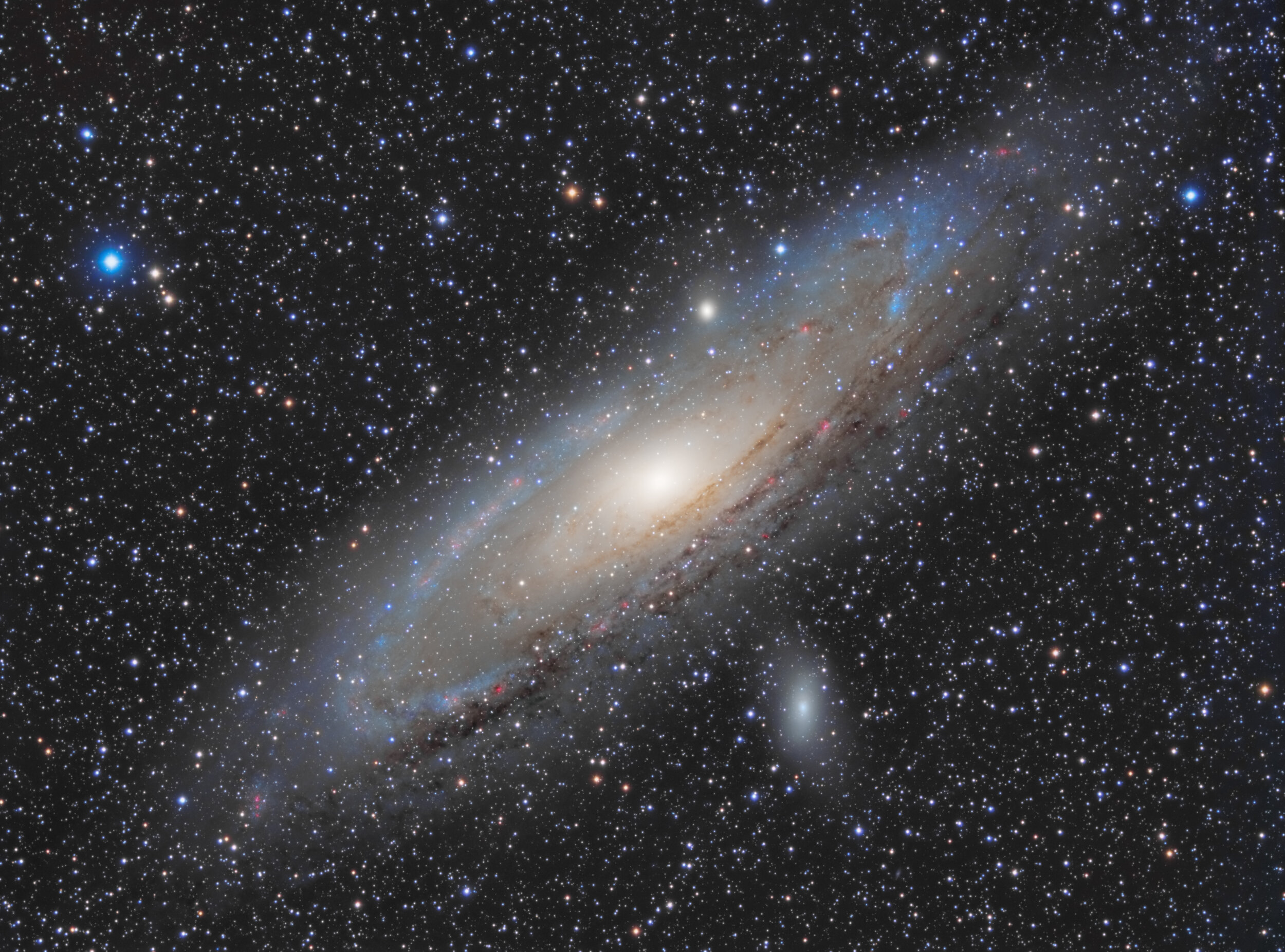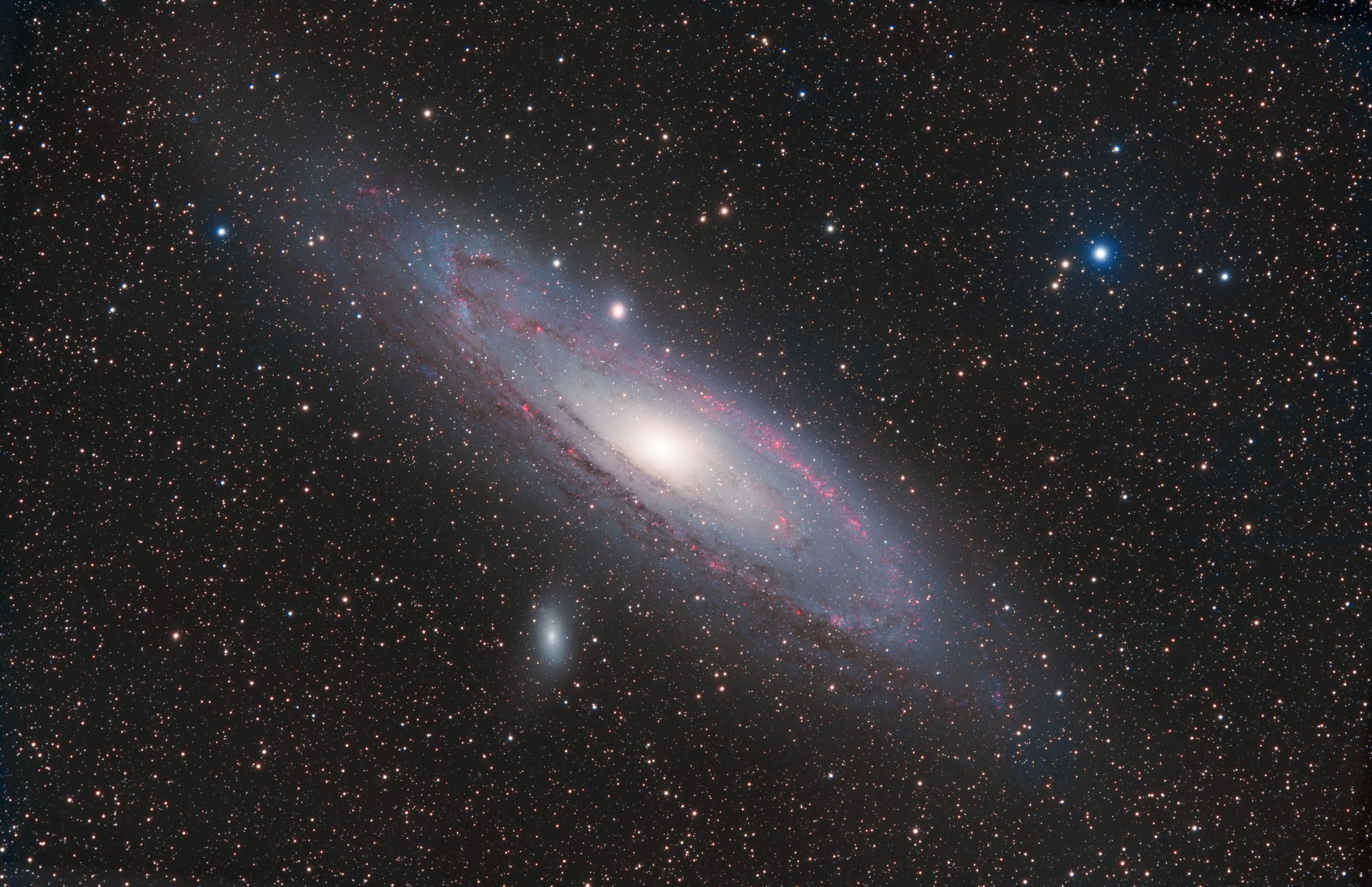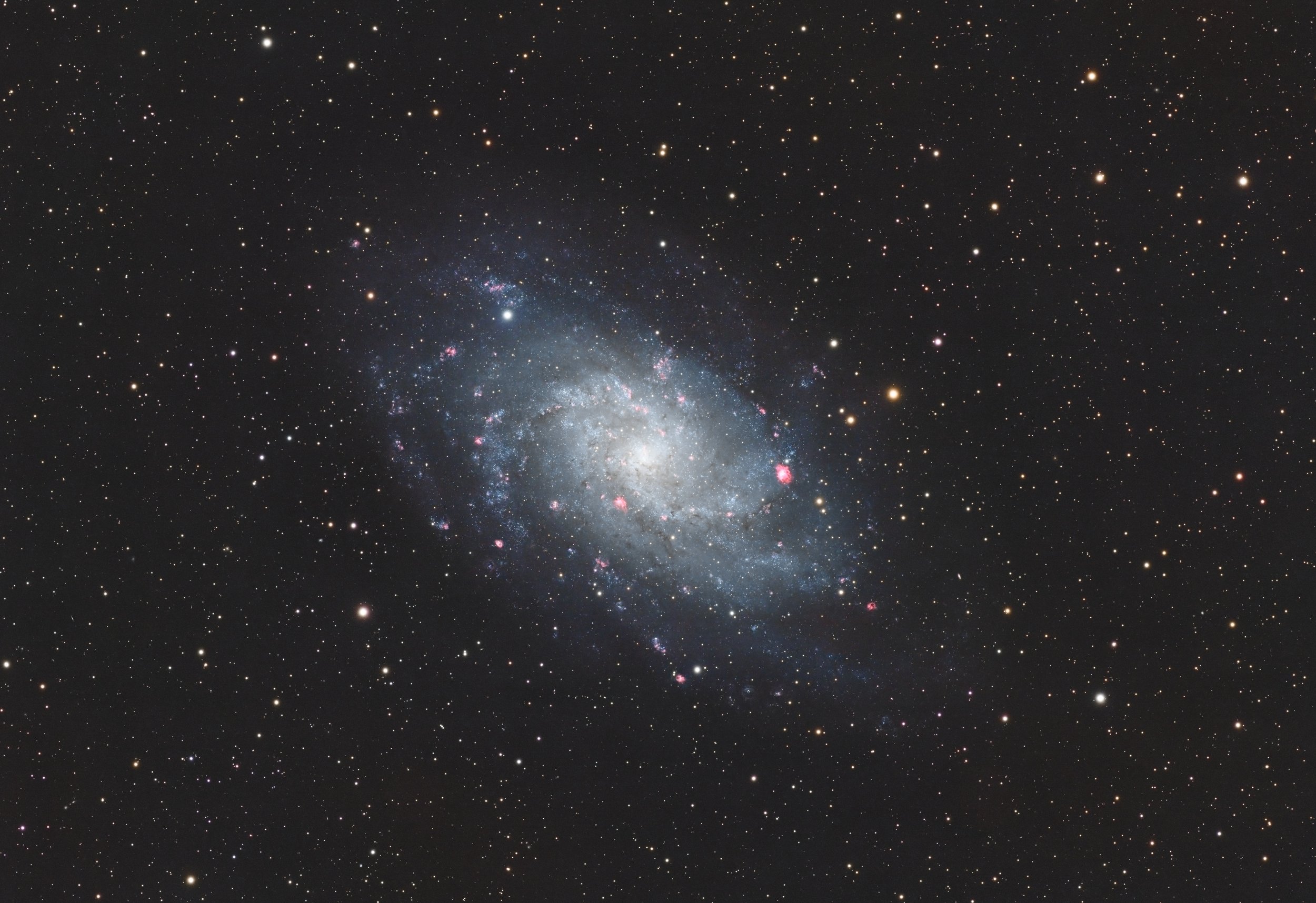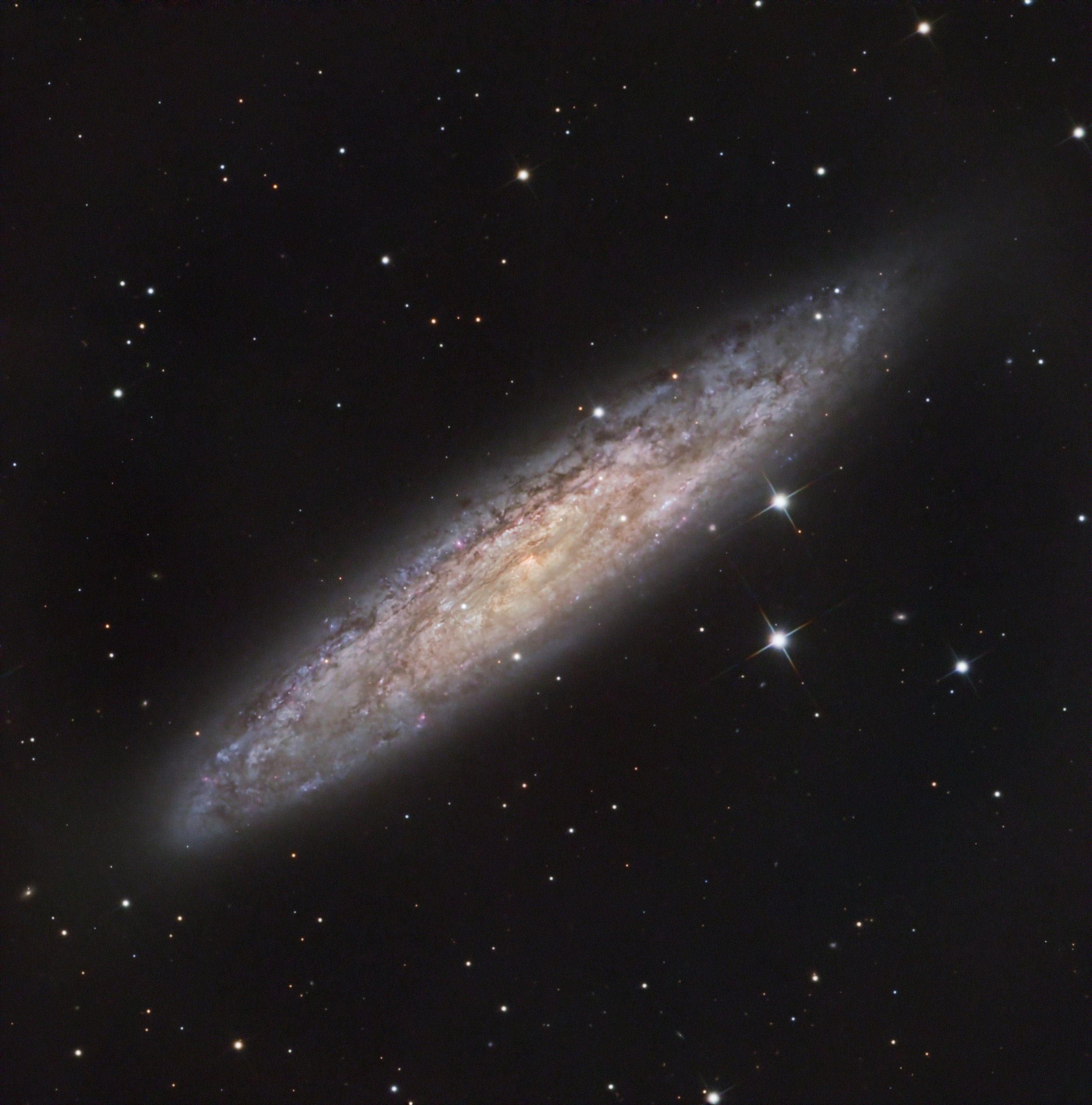The Andromeda Galaxy
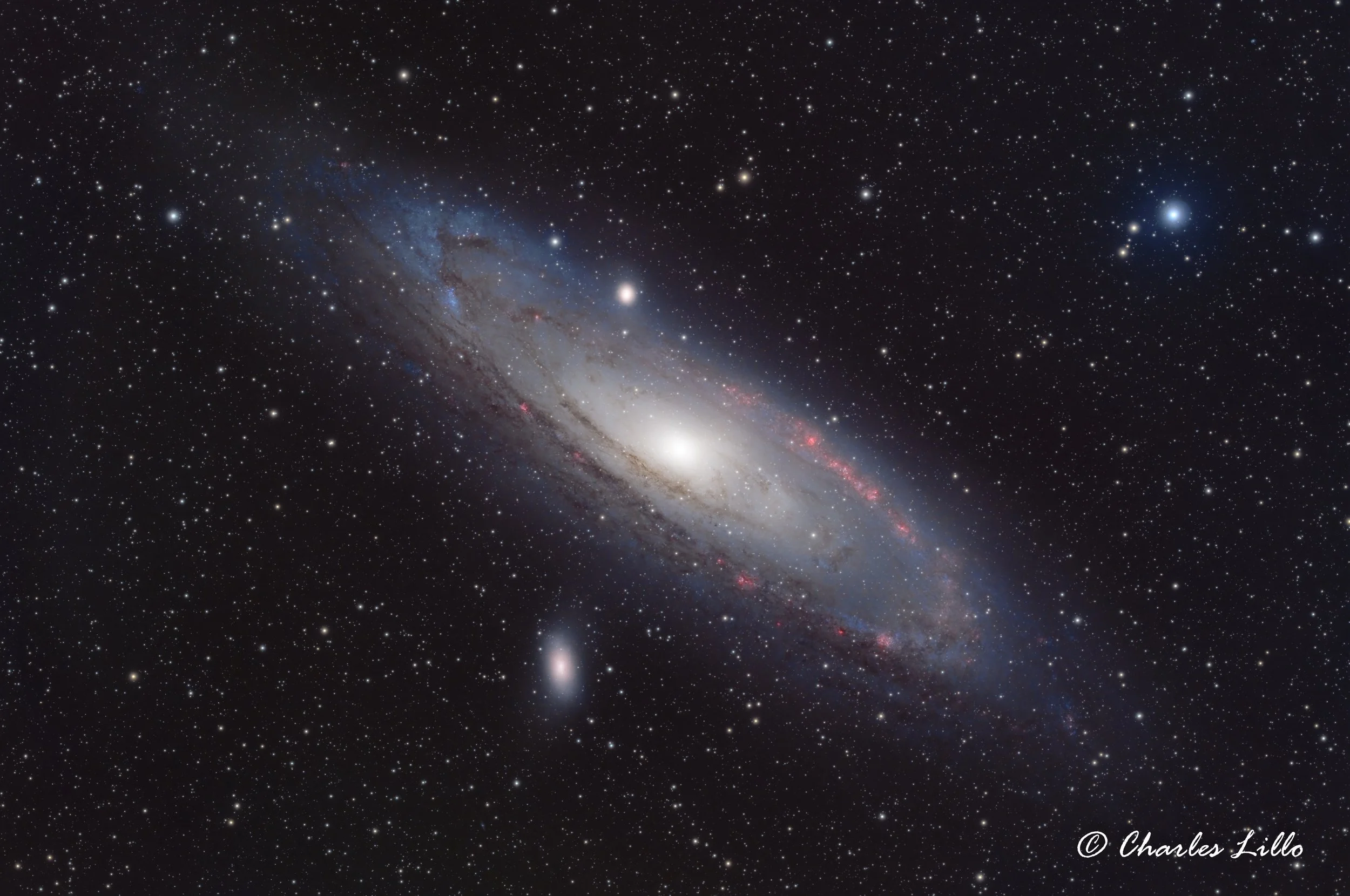
One lesser-known fact about the Andromeda Galaxy is that it has a history of interacting with and consuming smaller galaxies in its vicinity. Studies suggest that Andromeda has already swallowed at least two smaller galaxies in the past: the Andromeda II and Andromeda VI dwarf galaxies. This process of galactic cannibalism is not uncommon in the universe, as larger galaxies often gravitationally attract and merge with smaller ones over time. It is believed that the Milky Way, our own galaxy, is also on a collision course with Andromeda, and the two are expected to collide and merge in about 4.5 billion years, forming a new galaxy often referred to as "Milkdromeda" or "Milkomeda." This cosmic event will likely have significant implications for the structure and evolution of both galaxies and the distribution of stars within them.
Another interesting aspect of the Andromeda Galaxy is its massive size. It is one of the largest galaxies in the Local Group, with a diameter of approximately 220,000 light-years, making it about 2.5 times the size of the Milky Way. Andromeda is also estimated to contain around one trillion stars, which is roughly twice the number of stars in the Milky Way. This staggering scale highlights the immense gravitational forces and complex dynamics at play within this galactic giant.
Additionally, the Andromeda Galaxy is home to a unique population of hot, young, blue stars in its spiral arms. These massive stars are responsible for intense regions of star formation, producing powerful stellar winds and radiation that shape the surrounding interstellar medium. The presence of these young stars contributes to the vibrant and dynamic nature of Andromeda, fueling ongoing processes of stellar birth and evolution within the galaxy.
This composite image of the Andromeda Galaxy (M31) showcases the stunning beauty and intricate details of this neighboring spiral galaxy. Combining LRGB data with the added Hydrogen-Alpha (Ha) channel, this image provides a comprehensive view of M31, emphasizing the regions within the galaxy where hydrogen gas is actively emitting light at the specific Ha wavelength.
The incorporation of the Ha data enriches the visual narrative, highlighting the vibrant star-forming regions, intricate nebulae, and active hydrogen gas clouds within M31. These enhanced details offer valuable insights into the ongoing stellar birth and evolution processes occurring throughout the galaxy.
By revealing the distribution of hydrogen gas and accentuating the complex interstellar structures, this image fosters a deeper understanding of the galactic dynamics and the intricate relationship between star formation and the overall morphology of the Andromeda Galaxy. The combination of LRGB and Ha data provides a visually compelling representation that aids astronomers in unraveling the mysteries of this colossal cosmic neighbor.
I’ve been a dedicated to Squarespace fan for 20 years. Love the product, people and company.

